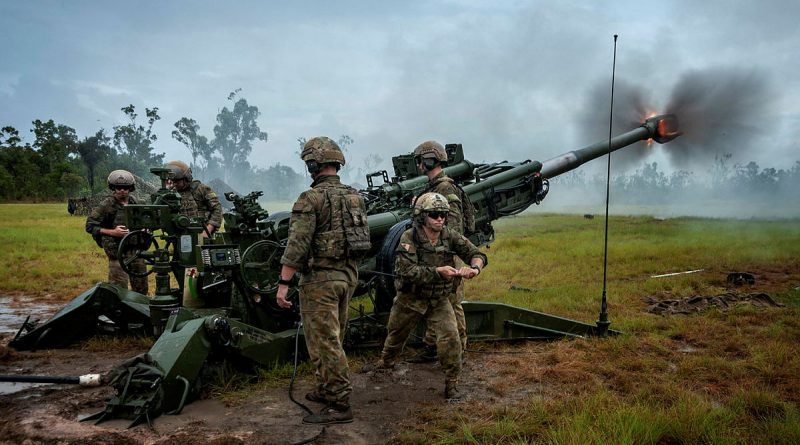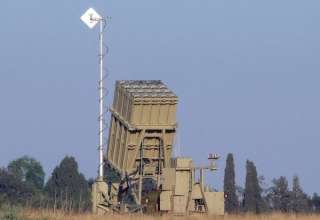By Bevan Ramsden
There has been a dramatic change in our strategic circumstances. United States reliability has been found wanting.
This provides both a challenge and an opportunity. We now need an alternative self-defence policy which will safeguard our territory and enable the pursuit of peace in our region as an independent and responsible country.
The US administration under Trump has demonstrated, in a very short time, that raw self-interest drives the United States, alliances can be sacrificed at short notice and its alliance partners are not exempt from punitive tariffs impositions, all in US self-interest.
Australia is faced now with an unpalatable truth. We cannot rely on the US to come and rescue us in time of danger.
The US alliance is unreliable, if indeed it ever was. A realistic reading of the ANZUS Treaty signed back in 1951 shows no guarantee of automatic support from the US when we are under military threat. In that respect, it is not worth the paper it was written on. However, a lazy and subservient Australian leadership has clung to this “article of faith” that the United States will always come and protect us in time of need and have adopted defence policies based on that belief.
The stark reality is that this belief is baseless and that recognition has thrust to the fore the need for an alternative self-defence policy to meet our security needs.
There is growing recognition of these changed strategic circumstances in the broader community but it has yet to dawn on the leadership of the two major parties. The Greens have responded to the situation with their version of an alternative self-defence.
Senator David Shoebridge, Greens Spokesperson for Defence, said at the launch of their alternative defence policy: “For decades, the major parties have based Australia’s defence policy on dependence and integration with the US military. This was a mistake.
“Our defence policy shouldn’t be based on Donald Trump coming to our rescue.
“Australia cannot continue to waste money on multibillion-dollar US weapons platforms, designed not to defend Australia but supplement Donald Trump’s military.
“To seriously decouple the ADF from the US and to proudly take an independent foreign policy, we need to develop sufficient sovereign capabilities. Unlike AUKUS though, these capabilities should be to defend Australia, not threaten our neighbours.
“Australia needs to have a defence force that is about that, defending ourselves, not threatening our neighbours.
“If Australia wants an independent foreign policy and to detach ourselves from Donald Trump, we need to have a clear alternative. The major parties aren’t interested in that, the Greens are.”
Another community organisation, the Independent and Peaceful Australia Network (IPAN), for some years, has been developing an alternative self-defence policy for an independent Australia. Its policy was finalised and adopted on 24th March this year.
While there are similarities between the Green’s and IPAN’s policies, IPAN assumes that a fully-fledged alternative self-defence policy can only be implemented when Australia has broken from the US alliance and is free to pursue an independent foreign policy.
The key features of IPAN’s alternative self-defence includes recall of all ADF personnel to Australia where their role would be confined to defence of Australia’s territory, including its approach waters, that ADF would not be deployed in wars overseas except for involvement in United Nations peacekeeping operations where appropriate.
The first line of defence would be diplomacy with the diplomatic service given increased and appropriate resources and differences with other countries sought to be resolved based on equality and mutual respect.
The IPAN concept would embrace a policy based on the principle of “non-nuclear, armed neutrality”; neutrality meaning that Australia would have no involvement in any wars between other countries. It would prevent Australian territory being used in such wars. This necessarily means ending foreign military bases on our soil including Pine Gap, North West Cape Submarine Communications Station, sending the US marines in Darwin home and cancelling AUKUS and the Force Posture Agreement.
This version of neutrality would not be isolationist. To the contrary, it would involve active participation in international affairs opposing oppression and injustice, hosting meetings between belligerents, acting as a mediator in disputes between countries and peacebuilding in our region and wider.
“Armed” means having the capacity to effectively militarily defend Australia against hostile incursions into our sovereign territory. Australia is ideally placed geographically to implement such a policy. Sam Roggeveen has propounded a similar defence philosophy in his “Echidna Strategy”.
“Non-aligned” means forming no military alliances or agreements with other nations. Australia could find more security by joining the non-aligned movement.
“Non-nuclear” would include signing and ratifying the Treaty for Prohibition of Nuclear Weapons.
The Greens have stated the need for a sovereign Australian defence industry to provide hardware support for a Self-Defence Force. IPAN agrees with this need but stresses that this industry must be publicly owned and hence under government control. Privately owned defence industry corporations (the MIC) have profited hugely from the public purse. There is no place for a privately owned Military Industrial Complex in IPAN’s vision.
IPAN has not argued for particular hardware for self-defence as the Greens have done. IPAN feels that military experts will advise, when Australia has embraced independence, whether a coastline armed with missiles is appropriate and whether underwater drones can replace or supplement conventional submarines. IPAN is opposed to nuclear submarines which are designed for servicing distant wars, are cost prohibitive and pose toxic long-lasting health dangers, including having to store their nuclear waste.
However, IPAN believes that it is vital that a sovereign publicly owned industry forms the backbone of defence hardware production and maintenance to enable a self-defence force to be independent and cost-effective.
Opponents of an independent self-defence force argue that it would be very costly and require a significant increase in military spending. A realistic assessment would prove the opposite. In fact, far less would need to be spent on a truly independent self-defence, enabling the public purse to better finance health, education, affordable housing and addressing the climate crisis.
For example, for many years the Swiss have practiced neutrality safeguarded by an independent self-defence force. According to the Stockholm Institute, their spending on defence in 2020 was 0.7 per cent of their (gross domestic product) GDP. Australia’s defence spending in 2019–20 was 2.1 per cent of GDP, three times as much.
Because of Australia’s current dependence on and integration with the US military, our military purchases have been determined by the need for integration and interchangeability with the US military. Their military needs are not for the defence of the United States or Australia but for waging wars of aggression abroad. This is a significantly different specification to that required for self-defence of an island continent and instead, requires expensive and complex equipment, aircraft and naval vessels.
Final thoughts
The experts tell us that today, technological developments favour the defender and are cheaper than equipping a military force for aggression abroad.
The times have changed. There is recognition that we need to stand on our own feet as a country and look after ourselves. This is a step towards a truly independent and peaceful Australia and is to be warmly welcomed.






